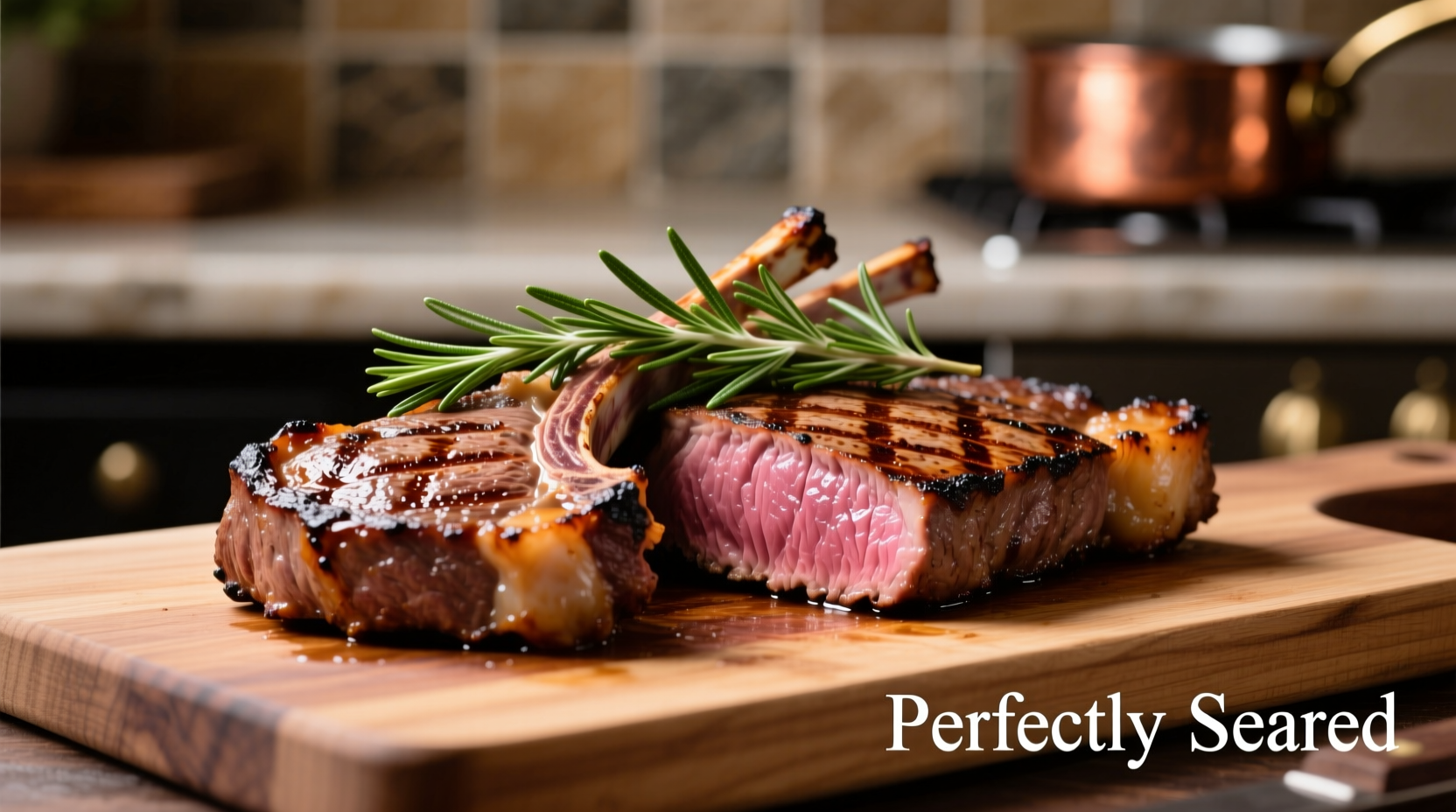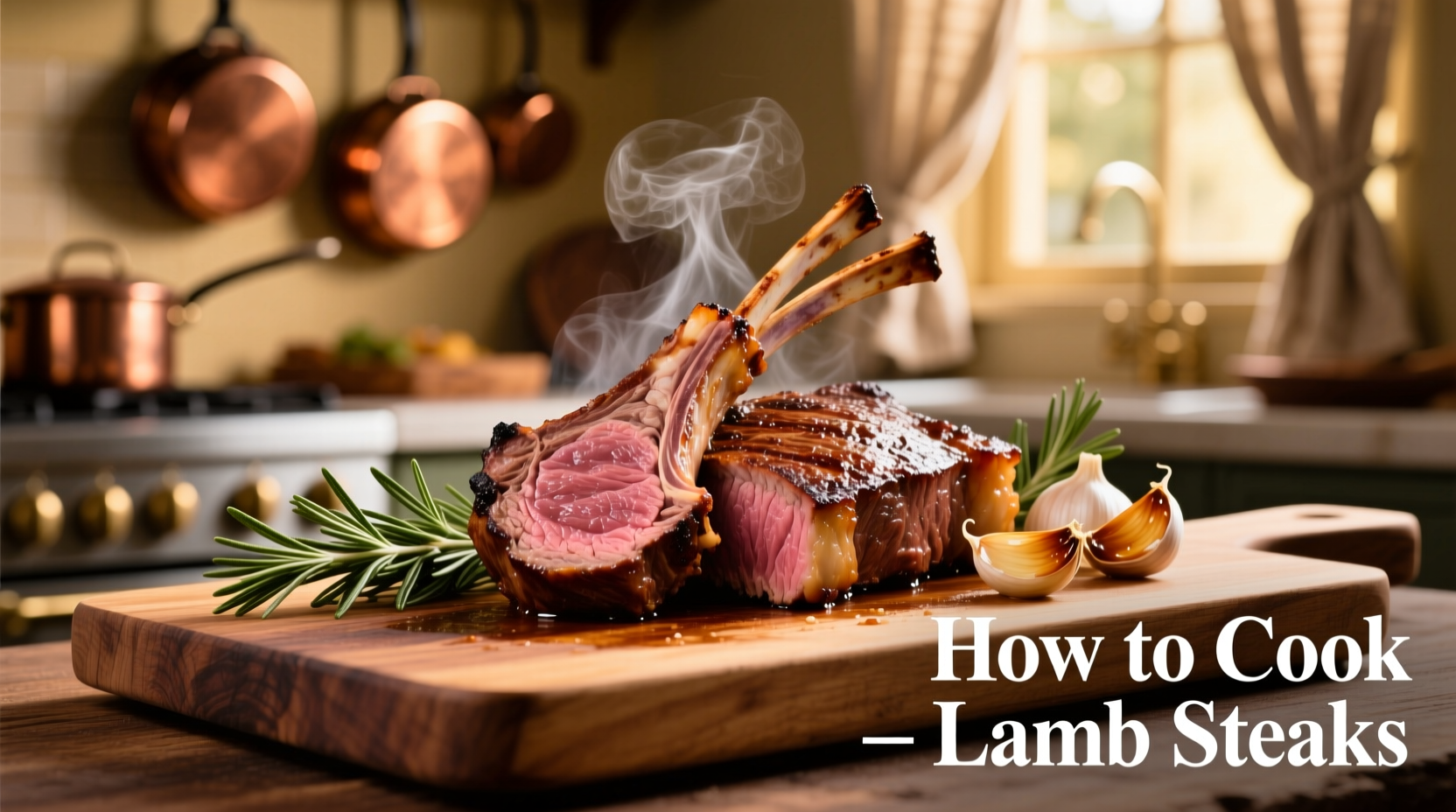Perfectly cooked lamb steaks require selecting quality cuts, proper seasoning, precise cooking temperatures (120-145°F internal), and adequate resting time. Follow this guide for restaurant-quality results every time, whether pan-searing, grilling, or oven-finishing your lamb steaks.
| Doneness Level | Internal Temperature | Visual Characteristics | Resting Time |
|---|---|---|---|
| Rare | 120-125°F (49-52°C) | Bright red center, very soft to touch | 8-10 minutes |
| Medium Rare | 130-135°F (54-57°C) | Warm red center, slightly springy | 10-12 minutes |
| Medium | 140-145°F (60-63°C) | Pink center, firm but yielding | 12-15 minutes |
| Medium Well | 150-155°F (66-68°C) | Slightly pink center, firm | 15 minutes |
Why Lamb Steaks Demand Special Attention
Lamb steaks differ significantly from beef or pork due to their unique fat composition and delicate muscle structure. Unlike other meats, lamb's fat contains short-chain fatty acids that melt at lower temperatures, creating that distinctive rich flavor but requiring precise temperature control. The USDA Food Safety and Inspection Service recommends cooking lamb to a minimum internal temperature of 145°F for safety, but many chefs prefer medium-rare (130-135°F) for optimal tenderness and flavor retention1.
Step 1: Selecting and Preparing Your Lamb Steaks
Start with quality cuts—ribeye, loin, or sirloin steaks work best for home cooking. Look for vibrant red meat with fine marbling and creamy white fat. Avoid grayish discoloration or yellow fat, which indicates age. Before cooking, bring steaks to room temperature for 45-60 minutes; this ensures even cooking. Trim excess surface fat only where it's excessively thick (more than 1/4 inch), as lamb fat carries essential flavor compounds.
Step 2: Seasoning for Maximum Flavor Impact
Simple seasoning works best with quality lamb. Generously coat both sides with coarse sea salt and freshly ground black pepper 30-45 minutes before cooking. This dry-brining process enhances flavor penetration and creates a superior crust. For additional depth, add crushed rosemary or thyme during the last 2 minutes of cooking. Professional chefs at the Culinary Institute of America emphasize that "lamb's natural flavor profile shines with minimal seasoning—let the meat speak for itself"2.

Step 3: Mastering the Cooking Process
Pan-searing method (best for indoor cooking): Heat a heavy skillet (cast iron preferred) over medium-high heat until smoking slightly. Add 1 tablespoon high-smoke point oil (avocado or grapeseed). Place steaks in pan, pressing gently for full contact. Sear 3-4 minutes per side for 1-inch thick cuts. During the last minute, add butter, garlic, and herbs to the pan, tilting and spooning the melted butter over the steaks.
Grilling method (ideal for summer cooking): Preheat grill to high (450-500°F). Sear steaks over direct heat for 3-4 minutes per side, then move to indirect heat to finish cooking to desired temperature. This two-zone approach prevents exterior charring before interior reaches proper temperature.
Key timing consideration: Cooking time varies significantly based on thickness. A 1.5-inch steak requires approximately 6-7 minutes per side for medium-rare, while a 1-inch steak needs only 3-4 minutes. Always use an instant-read thermometer for accuracy—relying solely on time leads to inconsistent results.
Step 4: The Critical Resting Phase
Never skip resting your lamb steaks! This 10-15 minute period allows juices to redistribute throughout the meat. Cutting too soon causes precious juices to escape onto your cutting board. During resting, the internal temperature will continue rising 5-10 degrees (carryover cooking), so remove steaks from heat 5 degrees below your target temperature. Cover loosely with foil to retain heat without steaming the crust.
Troubleshooting Common Lamb Steak Problems
- Tough texture: Usually caused by overcooking or insufficient resting. Lamb's delicate proteins tighten excessively above 145°F.
- Burnt exterior/raw interior: Pan wasn't hot enough before adding meat, causing sticking and uneven cooking.
- Excessive smoke: Fat dripping onto heat source. Trim only excessive fat and use a splatter screen.
- Dry results: Cutting too soon after cooking or using lean cuts not suited for high-heat cooking.
Advanced Techniques for Restaurant-Quality Results
For exceptional results, try these professional techniques: "dry-aging" your steaks in the refrigerator uncovered for 24-48 hours to concentrate flavor, or use the reverse sear method for thicker cuts (oven at 275°F until 115°F internal, then sear). The Maillard reaction (browning) occurs most effectively between 300-500°F—below this range you'll steam the meat, above it you'll burn before proper browning occurs.
Perfect Pairings for Your Lamb Steaks
Complement lamb's rich flavor with bold accompaniments: mint chimichurri, roasted garlic mashed potatoes, or a robust red wine reduction. Traditional Mediterranean pairings like tzatziki or roasted eggplant work beautifully. For wine, choose medium-bodied reds like Côtes du Rhône or a young Cabernet Sauvignon that won't overpower the meat's delicate flavor profile.











 浙公网安备
33010002000092号
浙公网安备
33010002000092号 浙B2-20120091-4
浙B2-20120091-4